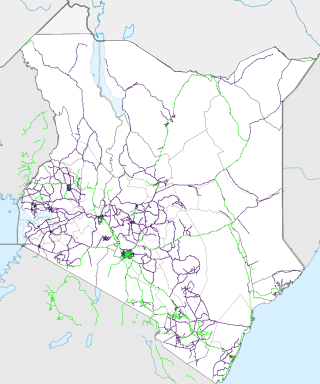
Transport in Kenya refers to the transportation structure in Kenya. The country has an extensive network of paved and unpaved roads.
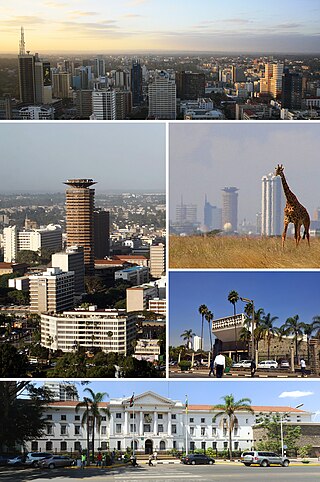
Nairobi is the capital and largest city of Kenya. The name is derived from the Maasai phrase Enkare Nairobi, which translates to 'place of cool waters', a reference to the Nairobi River which flows through the city. The city proper had a population of 4,397,073 in the 2019 census. The city is commonly referred to as The Green City in the Sun.

The Kikuyu are a Bantu ethnic group native to East Africa Central Kenya. At a population of 8,148,668 as of 2019, they account for 17.13% of the total population of Kenya, making them Kenya's largest ethnic group.
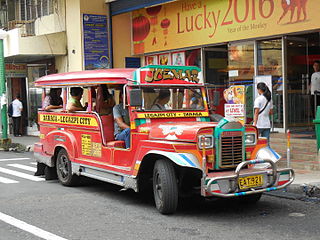
A share taxi is a mode of transport which falls between a taxicab and a bus. These vehicles for hire are typically smaller than buses and usually take passengers on a fixed or semi-fixed route without timetables, but instead departing when all seats are filled. They may stop anywhere to pick up or drop off their passengers. Often found in developing countries, the vehicles used as share taxis range from four-seat cars to minibuses. They are often owner-operated.
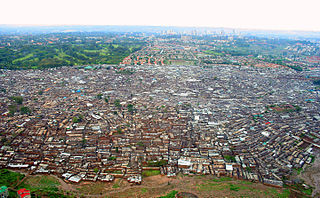
Kibera is a division and neighbourhood of Nairobi, Kenya, 6.6 kilometres (4.1 mi) from the city centre. Kibera is the largest slum in Nairobi, and the largest urban slum in Africa. The 2009 Kenya Population and Housing Census reports Kibera's population as 170,070, contrary to previous estimates of one or two million people. Other sources suggest the total Kibera population may be 500,000 to well over 1,000,000 depending on which slums are included in defining Kibera.
Karen is a suburb of Nairobi in Kenya, lying south-west of Nairobi's central business district. The suburb of Karen borders the Ngong Forest and is home to the Ngong Racecourse. Karen and Langata jointly form a somewhat isolated area of mid to high-income residents.
Lang'ata is a predominantly middle-class residential suburb of Nairobi in Kenya. The suburb consists of many smaller housing developments, referred to as estates. They include Nairobi Dam, Otiende, Southlands, Ngei, Jambo estate, Onyonka, Madaraka Estate, Kutch Prant, Rubia, NHC Langata, Akiba, Sun Valley, Royal Park and many others. These developments are primarily maisonettes or apartment blocks.

In Ghana and neighboring countries, tro tro are privately owned minibus share taxis that travel fixed routes leaving when filled to capacity. While there are tro tro stations, these vehicles for hire can also be boarded anywhere along the route.

Kenya has a Christian majority, with Islam being the second largest faith representing 11% of the Kenyan population, or approximately 5.2 million people as of 2019 census. The Kenyan coast is mostly populated by Muslims. Nairobi has several mosques and a notable Muslim population. The faith was introduced by merchants visiting the Swahili coast, which led to local conversions and foreign Muslims becoming assimilated. This would later result in the emergence of several officially Muslim political entities in the region.

Murang'a is a town in Murang'a County of Kenya. Before the independence of Kenya in 1963, this town used to be called Fort Hall. It is the administrative centre of Murang'a County and is mainly inhabited by the Kikuyu community. According to the 2019 census, the town has a population of about 110,000.
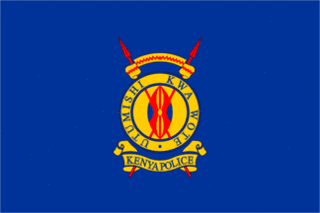
The Kenya Police Service is a national body in charge of law enforcement in Kenya. It is subordinate to National Police Service which is headed by Inspector General of Police who exercises independent command over the Service. Kenya Police is headed by Deputy Inspector General. Kenya Police is divided into Service Headquarters in Nairobi, Formations, General Duty Commands and Training Institutions.

Kwani? is a prominent African literary magazine headquartered in Kenya. It has been hailed as "undoubtedly the most influential journal to have emerged from sub-Saharan Africa".

Mathare is a collection of slums in Nairobi with a population of approximately 500,000 people; the population of Mathare Valley alone, the oldest of the slums that make up Mathare, is 180,000 people. Mathare is the home of football teams Mathare United and Real Mathare of the MYSA. Mathare is currently part of two electoral constituencies; the titular Mathare Constituency and the northern part being in Ruaraka Constituency. The northern part was initially part of Kasarani Constituency up to the 2013 elections when Kasarani was split into three electoral constituencies; Ruaraka being among them. The southern part was domiciled in Starehe Constituency.
Banana Hill is a suburb of Karuri town, in the eastern part of Kiambu County, Kenya. Banana Hill's population constitutes 20 percent of the estimated 100,000 residents within Kiambaa Constituency.

Indians in Kenya, often known as Kenyan Asians, are citizens and residents of Kenya with ancestral roots in the Indian subcontinent. Significant Indian migration to modern-day Kenya began following the creation of the British East Africa Protectorate in 1895, which had strong infrastructure links with Bombay in British India. Indians in Kenya predominantly live in the major urban areas of Nairobi and Mombasa, with a minority living in rural areas.
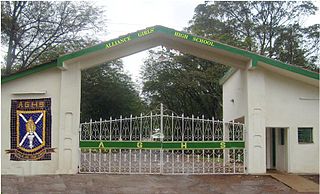
Alliance Girls' High School (AGHS) is a public national boarding school for girls located near the small town of Kikuyu in Kiambu County, 20 km from Nairobi. Founded in 1948 as the African Girls' High School, it is within walking distance from its brother school Alliance High School.
A list of happenings in 2011 in Kenya:

Frank Odoi, one of Africa's foremost cartoonists, was born in the mining town of Tarkwa in western Ghana in 1948. He was the only boy amongst seven sisters. He lost his father at an early age and was primarily raised by his mother. He was married to Monicah Asami, who later changed her name to Caroline Odoi. They had three daughters Maureen Atulo, Francesca Ajua Odoi and Francine Ashardey Odoi.
Kenyan reggae is mainly a fusion of Jamaican reggae and local ethnic singing styles that incorporate Lingala, benga and Kenyan hip hop.
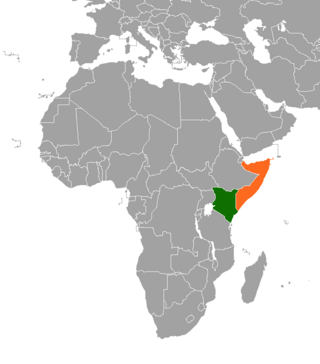
The Somali–Kenyan conflict has been an issue within Kenya since the colonial period. Problems have ranged from skirmishes between the two communities and have led to terrorist attacks, police harassment, extortion, home invasions, physical violence, and massacres perpetrated against Somalis and Kenyans.

















